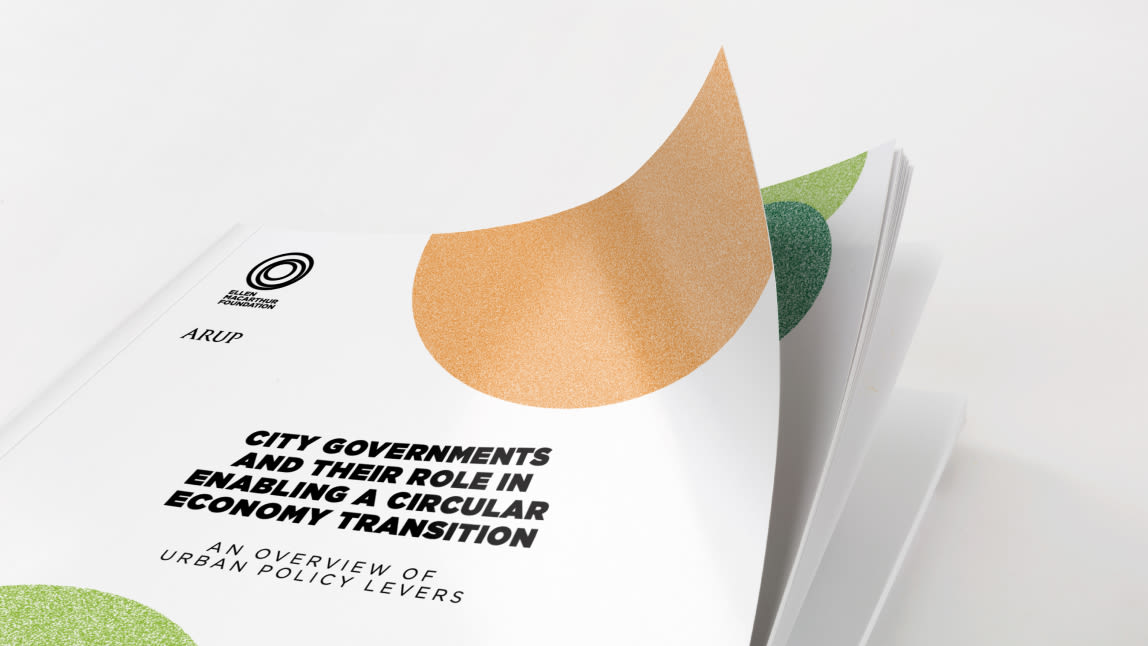These factsheets outline circular economy opportunities to design out urban waste and pollution, ensure products and materials maintain their value, and regenerate the natural systems in our cities.
Easy-to-reference, the factsheets are a collation of research and case examples that answer some of the most prevalent questions around what circular economycircular economyA systems solution framework that tackles global challenges like climate change, biodiversity loss, waste, and pollution. It is based on three principles, driven by design: eliminate waste and pollution, circulate products and materials (at their highest value), and regenerate nature. can bring to cities:
Why is change in cities needed?
What circular economy opportunities address key urban system issues?
What can urban policymakers do to harness circular economy opportunities?
What are the potential economic, social, and environmental benefits of these opportunities?
Three interrelated urban systems: buildings, mobility, products
The factsheets, downloadable below, focus on three interrelated urban systems - buildings, mobility, and products. These systems are key to the delivery of a city’s daily needs.
For each of these systems, five factsheets have been created together with a summary. The five factsheets each focus on a different phase in the circular material cycle: Planning, Designing, Making, Accessing, and Operating & Maintaining.
The examples included in each factsheet are non-exhaustive and any single opportunity might not represent the circular economy in its entirety but instead play a key part in enabling the transition. For a city to transition to a circular economy built on three core principles, multiple opportunities in different systems and phases need to be enacted. Other systems such as cities and circular economy for food, water, and energy, also need to be to considered. The time to act is now.

Buildings
A thriving city needs to offer affordable, healthy living and working space. By 2025, 1 billion houses are needed worldwide, of which 75% will be residential and 25% will be commercial. However, meeting this demand through current linear construction and housing practices will require an investment of around USD 9–11 trillion overall and have significant negative environmental impacts – such as the impacts from extraction that are felt locally as well as globally.
Integrating circular economy principles into all the phases of a building’s cycle can work to meet urban needs for built space, while staying within planetary boundaries. Core urban benefits of a circular economy development path include the possibility to reduce the need for new construction, improve urban land use, reduce construction and operational costs, and increase resource-efficiency, while strengthening the local economy.

Mobility
Mobility is a vital part of a thriving urban economy, but mobility solutions that do not take account of economic, environmental and societal impacts, can also be detrimental to urban life. Current linear practices in urban mobility, such as a high dependence on individual car ownership and fossil fuels, have created high levels of congestion leading to wasted time and lost productivity, as well as pollution, noise, heat-island effects, and the depletion of finite resources. Dependence on individual cars in cities can also be a strain on household budgets and can lead to high amounts of urban land devoted to parking. With urbanisation and the demand for urban freight rapidly increasing, the need for more effective urban mobility solutions are pressing. Given this, circular economy principles to design out waste and pollution, keep materials in use and at value, and regenerate natural systems provide the much-needed solution.
A circular urban mobility system focuses on effectively accommodating the user’s mobility needs by diversifying modes of transport. Core benefits of a circular economy development path include reducing virgin material consumption from the mobility sector, eliminating waste and pollution, maximising infrastructure and vehicle utilisation, and lowering use and operation costs.

Products
In a thriving city, residents and businesses have access to key consumer products that enable them to work, create, communicate, and have a high quality of life. However, current linear practices in production and consumption lead to the depletion of finite resources, high volumes of waste generation, the underutilisation of products and materials, and negative environmental and societal impacts along the entire supply chain and the exclusion of low-income groups. Industry innovations, particularly those related to digital technologies, such as digital manufacturing and big data (known as the Fourth Industrial Revolution), are leading to greater efficiency. However, as long as the challenges of the current product production and consumption system are not addressed, these new technologies will merely buy us a bit of extra time. As urban populations grow, so will the pressure on cities to solve these imperative challenges.
Integrating circular economy principles into every stage of the urban products system can lead to a wide range of benefits. This includes reducing virgin material consumption, eliminating waste and toxins, maximising product utilisation, improving product designs and services, lowering market entry barriers for businesses, and enabling wider access to products.






